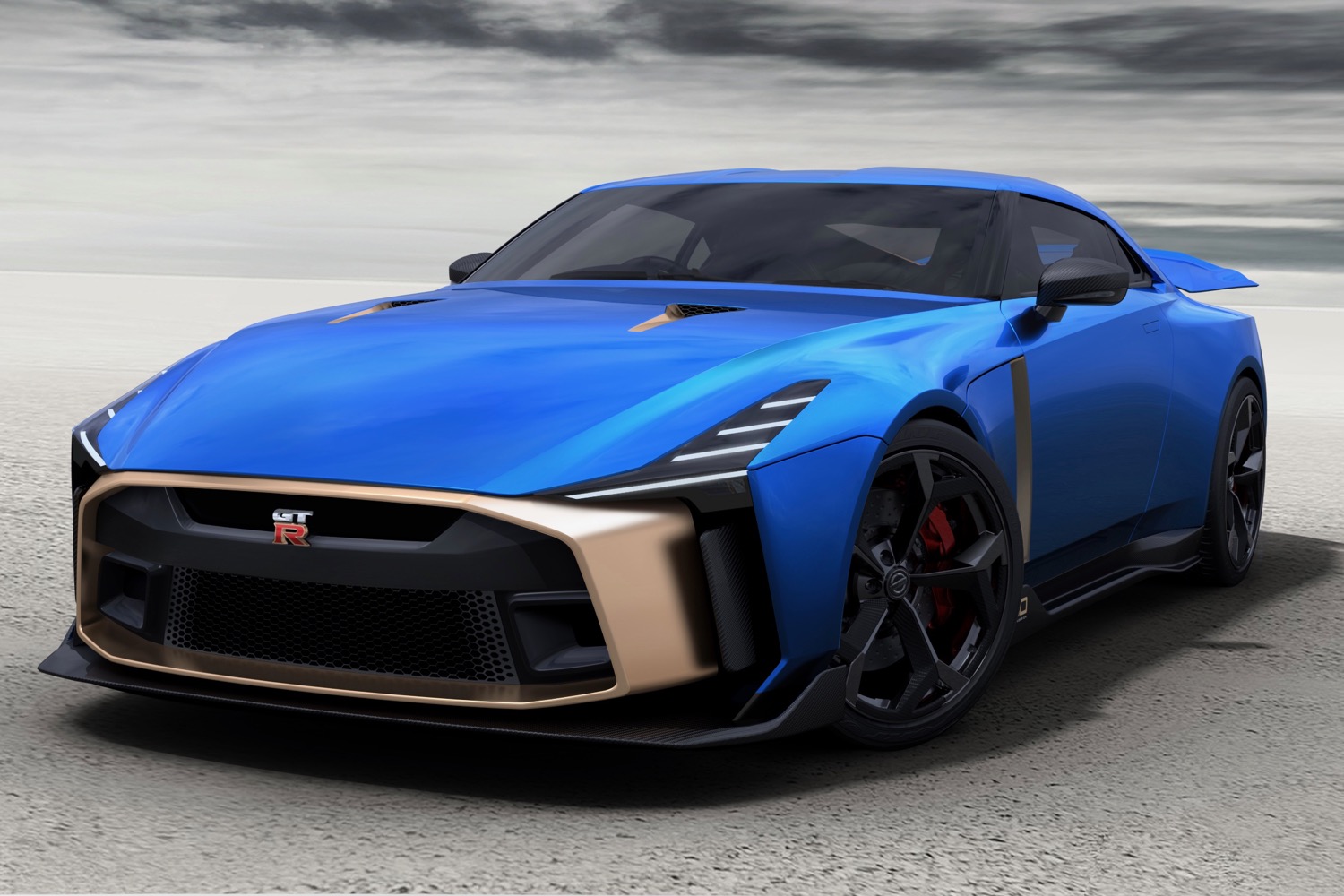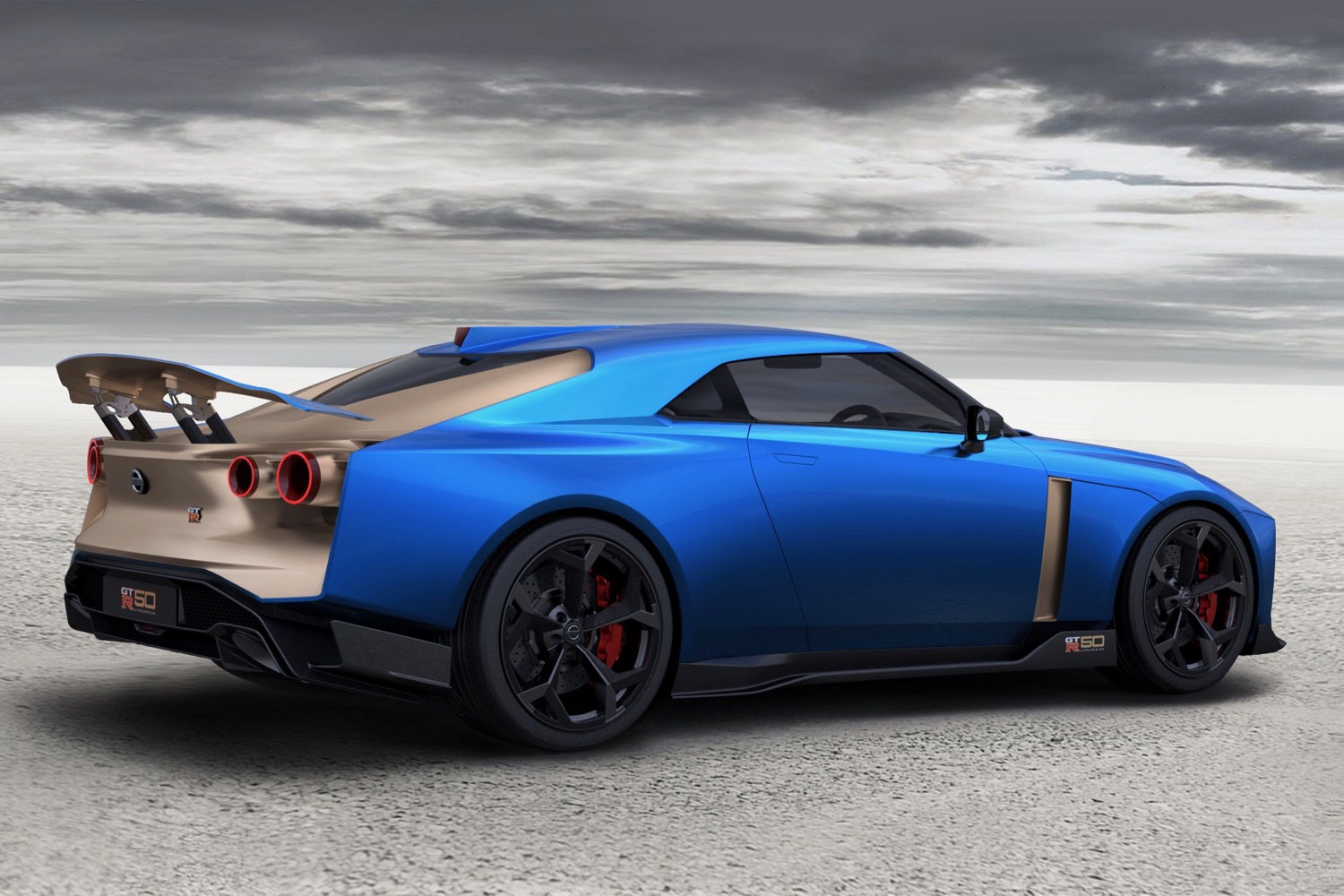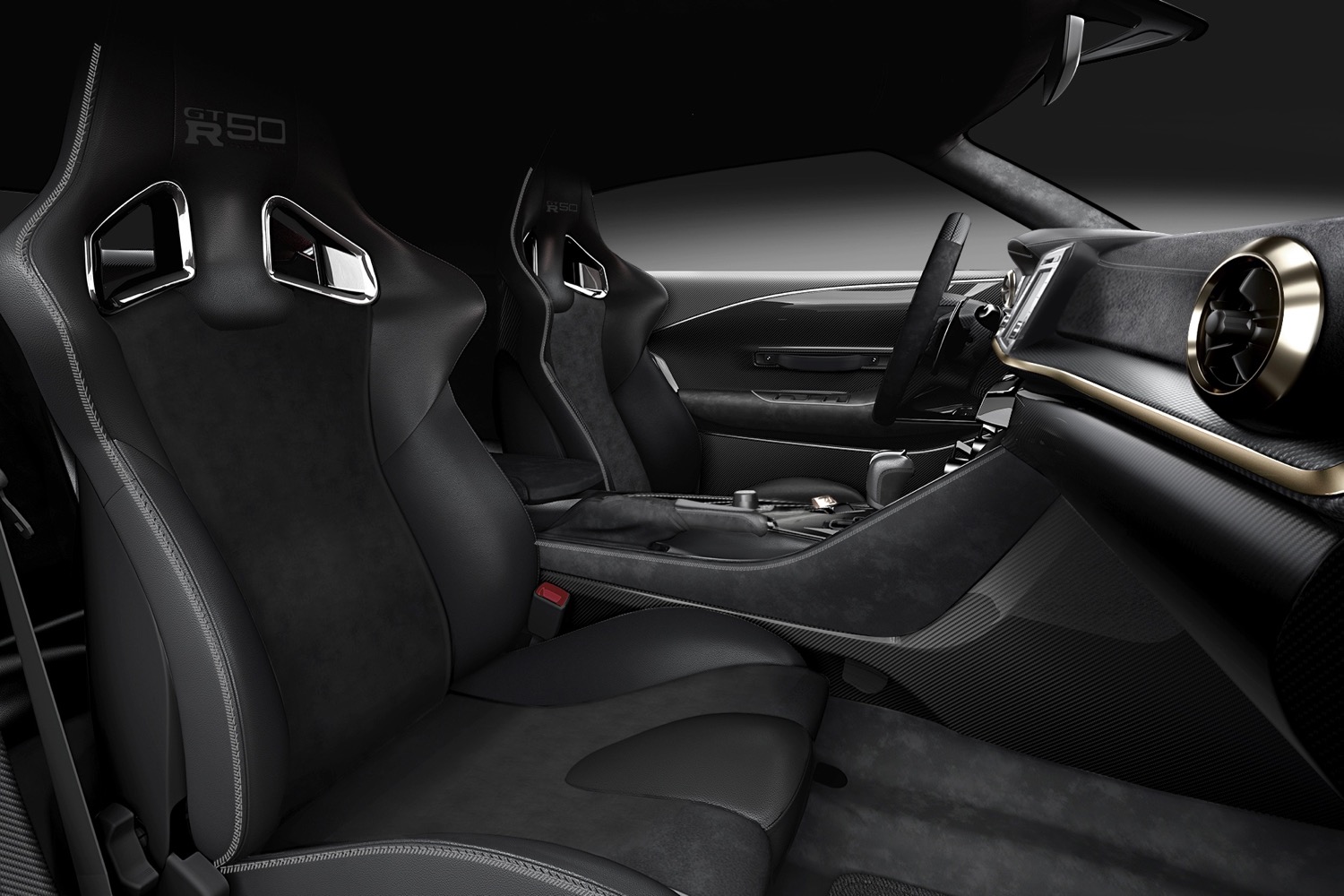The Nissan GT-R marks its 50th anniversary this year, so the Japanese automaker decided to celebrate in style. Nissan teamed up with legendary design firm Italdesign — which also celebrates its 50th anniversary this year — to create a one-off custom GT-R, appropriately named GT-R50. The companies decided to follow that up with 50 production models — priced at 990,000 euros ($1.1 million) each.
First off, we can tell you that this isn’t the much-discussed next-generation GT-R. While the car hasn’t had a full redesign in about a decade, Nissan isn’t ready to roll out a new model just yet. The GT-R50 was just an excuse for designers to flex their creative muscles and build a car outside the constraints of normal production vehicles, Nissan design boss Alfonso Albaisa said in a statement.
“Although this is not the next-generation GT-R, it is an exciting celebration of two anniversaries in a provocative and creative way — wrapping one of Nissan’s best engineering platforms and Japanese design with Italian coachbuilding,” Albaisa said of the original GT-R50 one-off. Nissan’s in-house design team actually came up with the ideas. Italdesign, whose previous hits include everything from the Maserati Merak to the original Volkswagen Golf, was tasked with making them a reality.
So what did a design team unleashed on one of the world’s most potent production performance cars come up with? Like the standard GT-R, the styling of the GT-R50 will likely get mixed reviews. The GT-R50 retains the same general outline of the standard GT-R while adding a little more flair. The roof is lower, the body sides are curvier, and the taillights stand proud of the body, giving the rear-end a resemblance to the Nissan Concept 2020 Vision Gran Turismo from 2014. Gold accents ensure that heads will turn when this car drives by.
On the inside, the changes aren’t quite as dramatic. The interior looks similar to a standard GT-R cabin, but is dressed up with a different mix of materials, including carbon fiber trim and gold accents to match the exterior. Nissan and Italdesign also fitted a new steering wheel and a race car-style digital instrument cluster.
Under the skin, the GT-R50 is based on the GT-R Nismo, the most powerful production GT-R variant. But the handbuilt 3.8-liter twin-turbocharged V6 now produces 710 horsepower and 575 pound-feet of torque, compared to 600 hp and 481 lb-ft in the stock GT-R Nismo. That’s thanks to larger turbochargers borrowed from the GT-R GT3 race car, and a host other changes to the engine. The six-speed dual-clutch transmission, differentials, and driveshafts were beefed up to handle the extra power, and the suspension was revised as well.
The Nissan GT-R50 was unveiled at the 2018 Goodwood Festival of Speed in England. The car made other appearances at iconic locations like the Spa-Francorchamps circuit in Belgium, the Rolex Monterey Motorsports Reunion at the Laguna Seca circuit in California, and Nissan Crossing in Tokyo’s Ginza district. Reaction from the public was so positive that Nissan and Italdesign decided to put the GT-R50 into production.
Confirming initial reports, just 50 customer cars will be built, referencing the GT-R’s and Italdesign’s 50th anniversaries. The $1.1 million price tag is around 10 times the price of a base GT-R, which starts at $99,990 (the GT-R NISMO starts at $175,540). Customers will be able to choose their own exterior and interior color combinations, at least, and can sign up for one of the 50 build slots through a dedicated website. Nissan plans to deliver the cars during 2019 and 2020.
Updated on December 7, 2018: Added confirmation of production version and price.
Editors' Recommendations
- Nissan used its car seat design experience to create these cool gaming chairs
- Could a high-performance Nissan Leaf steal the mighty GT-R’s lunch money?







